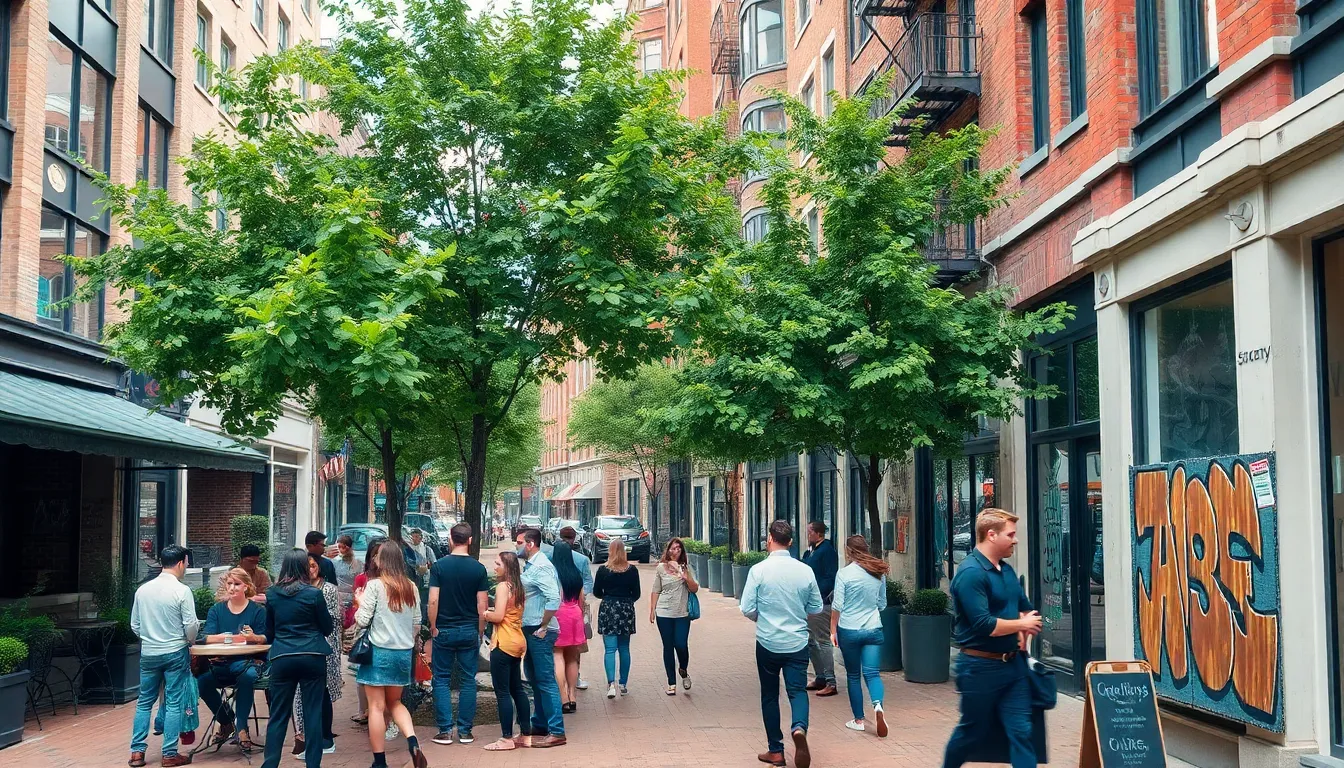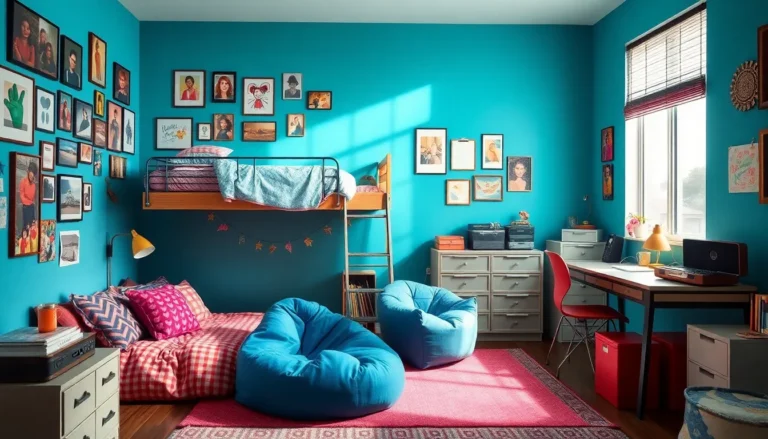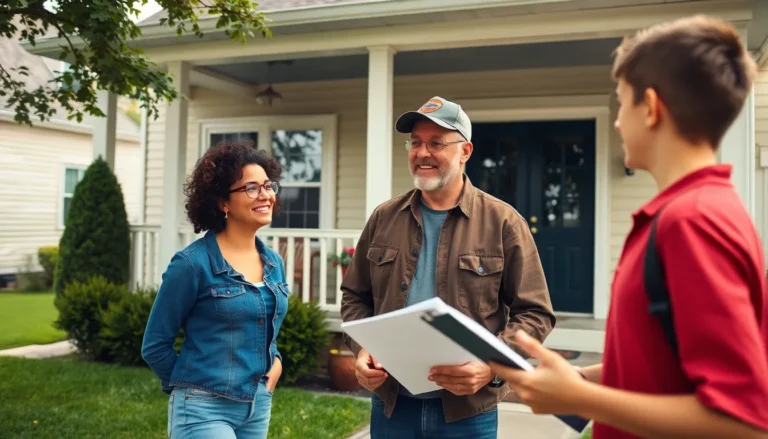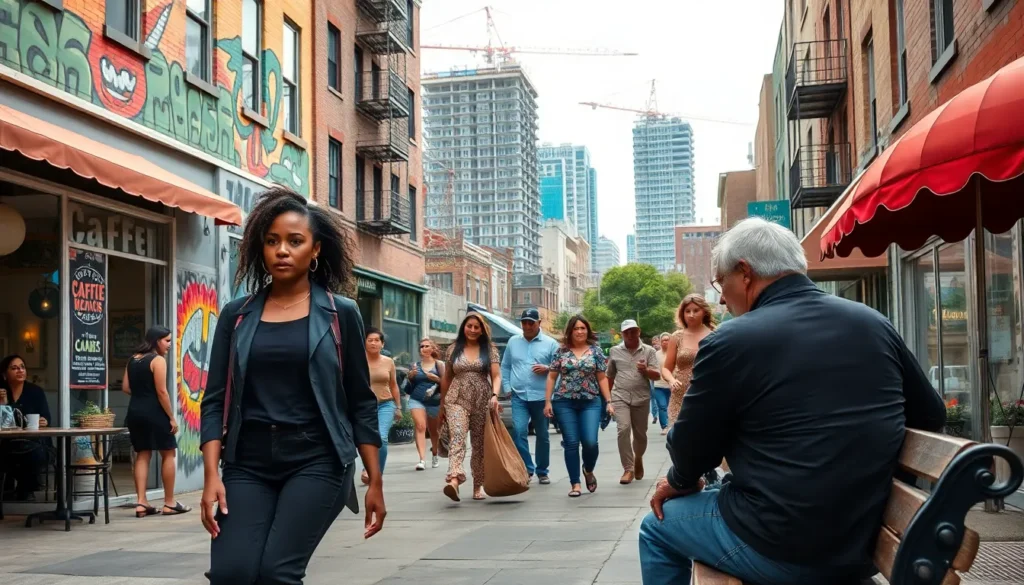Table of Contents
ToggleGentrification—it’s the urban equivalent of that friend who shows up to a party, takes over the music playlist, and suddenly everyone’s sipping artisanal coffee instead of cheap beer. While it can breathe new life into neighborhoods, it often comes with a hefty price tag and a side of displacement. Many folks are left wondering: is this progress or just a fancy way of saying goodbye to their favorite dive bar?
Understanding Gentrification
Gentrification represents a complex urban shift. It involves the transformation of neighborhoods characterized by socioeconomic changes, leading to rising property values and demographic shifts.
Definition and Overview
Gentrification describes a process wherein wealthier individuals move into less affluent neighborhoods. This influx often sparks improvements in local amenities and infrastructure. However, the consequence can lead to increased rent prices and property taxes, which displaces long-time residents. The dual nature of gentrification provokes debate about progress versus loss of community identity. Many view the revitalization of urban spaces as positive, while others emphasize the cultural erasure experienced by existing residents.
Historical Context
Historically, gentrification gained traction in the late 20th century. Economic policies and urban development initiatives contributed to this phenomenon. Factors such as deindustrialization and suburbanization prompted city dwellers to seek opportunities in urban areas. Neighborhoods once considered undesirable underwent transformation through investment and interest from newcomers. Social movements advocating for equity often intersect with gentrification discussions, illustrating the impacts on vulnerable communities. Understanding these historical roots reveals critical insights into the dynamics of modern urban development.
Causes of Gentrification

Gentrification results from various interconnected causes. Understanding these causes clarifies its impact on urban communities.
Economic Factors
Economic conditions drive gentrification through investment and property value increases. Rising demand for urban living attracts wealthier individuals, contributing to local revitalization. Governments often implement tax incentives that further encourage development. Increased investment from businesses also enhances neighborhood infrastructure, drawing new residents. These factors can elevate real estate prices, pushing out long-term residents. Availability of jobs in nearby areas can intensify this shift, as improved local economies support higher rents. Consequently, the financial landscape transforms drastically, favoring newcomers while simultaneously displacing established communities.
Social Dynamics
Social dynamics play a crucial role in gentrification. Cultural shifts often accompany the influx of affluent residents into previously underserved neighborhoods. Newcomers tend to seek vibrant communities with rich cultural experiences, thereby introducing changes to local lifestyles. Existing residents may experience cultural erasure and loss of community identity. Discussions among local organizations about community values can influence perceptions surrounding gentrification. Grassroots movements sometimes arise, advocating for affordable housing and protecting vulnerable populations. Social connections within the neighborhood impact how these changes are perceived, oscillating between acceptance and resistance among diverse demographic groups.
Effects of Gentrification
Gentrification triggers a range of effects that can reshape communities significantly. These impact local economies and cultural landscapes.
Positive Impacts
Gentrification often brings increased investment to neighborhoods. Local businesses may thrive with the influx of new customers. Public services such as parks, schools, and public transport receive enhancements, improving quality of life for residents. Crime rates frequently decrease due to community upgrades and heightened public safety measures. More diverse dining and entertainment options emerge, catering to a broader audience. Pleasant urban spaces attract residents looking for vibrant locales, contributing to overall community revitalization.
Negative Impacts
Rising property values lead to increased rent prices and property taxes. Long-time residents frequently struggle to afford their homes, worrying about displacement. Cultural erasure often occurs as local traditions and long-standing businesses fade away. Social tensions may escalate between newcomers and existing residents. Community cohesion suffers when neighbors feel threatened by rapid changes. City infrastructure can become strained, as neighborhoods experience an influx without simultaneous planning for additional services.
Case Studies
Case studies illustrate the diverse effects of gentrification on urban communities. Examples include both successful transformations and contentious scenarios.
Successful Gentrification Examples
Portland, Oregon, showcases a successful gentrification model. In the last two decades, the Alberta Arts District emerged as a vibrant hub. Local businesses flourished, creating job opportunities and attracting young professionals. Community investment led to enhanced public amenities, improving overall quality of life. Subsequently, the neighborhood became known for its arts scene, fostering a sense of community. Property values increased, yet efforts maintained some affordable housing options for existing residents.
Another example is Washington, D.C., where neighborhoods like Shaw experienced revitalization. Redevelopment projects introduced new shops, restaurants, and public spaces. Over time, these changes attracted a diverse demographic and improved safety. Active community groups prioritized inclusion, striving to balance growth with affordability.
Controversial Gentrification Cases
San Francisco serves as a prominent case of controversial gentrification. Rapid tech industry growth caused property values to skyrocket, impacting long-time residents. Many faced displacement due to soaring rents and property taxes. This led to protests and public discourse over housing policies. Critics argue that the city lost its cultural identity as iconic neighborhoods transformed.
Similarly, Williamsburg in Brooklyn experienced significant gentrification. The influx of affluent newcomers enhanced local amenities, yet many existing residents felt marginalized. Local businesses that served long-time residents began to disappear. This shift sparked tensions between different community groups. Authorities faced criticism for inadequate measures to provide affordable housing solutions.
Gentrification remains a contentious issue in urban development. While it can breathe new life into struggling neighborhoods and enhance local amenities, the adverse effects on long-time residents are undeniable. The balance between revitalization and displacement is delicate, often leading to social tensions and cultural loss.
Understanding the complexities of gentrification is crucial for communities facing these changes. As cities evolve, the need for equitable solutions becomes more pressing. Advocating for policies that prioritize affordable housing and community engagement can help mitigate the negative impacts of gentrification. Ultimately, fostering inclusive growth is essential for preserving the unique character of neighborhoods while accommodating new opportunities.







